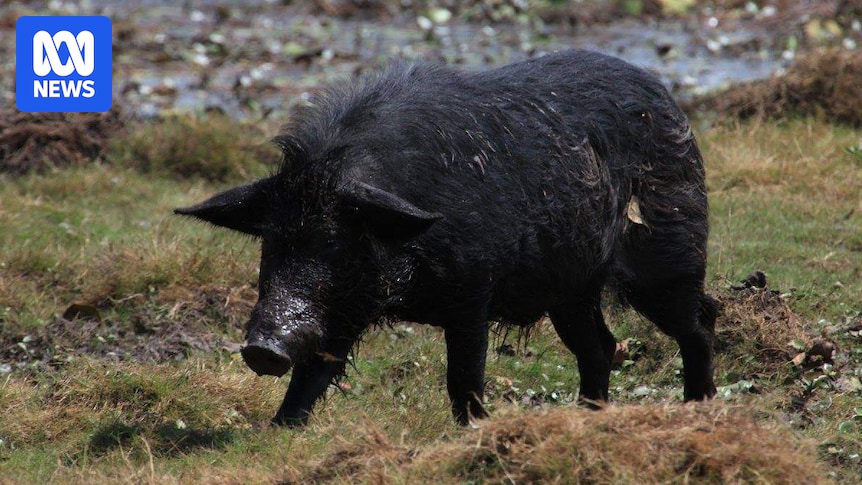Feral pigs found and destroyed on South Australia’s Limestone Coast were illegally brought into the region from New South Wales, DNA testing has found.
The Limestone Coast Landscape Board (LCLB) said three attempts had been made to introduce a pig population in the region at Kingston SE, Robe and Mount Burr in the past three to four years.
Operations manager Mike Stevens said the board worked quickly to ensure the pigs did not become established.
“It’s likely people have gone up there, caught some pigs, presumably brought them back home and released them on purpose to establish a hunting population for themselves,” he said.
“There’s been some work done that’s confirmed the genetics of the animals being released are from southern NSW.”
Three attempts to establish a population in the region have been made in recent years. (Supplied: Limestone Coast Landscape Board)
Mr Stevens said feral pigs could reproduce rapidly.
“In optimal conditions a pregnant female can have up to 10 kids [that are] sexually mature within six months [after a] a three- to four-month gestation period.
“If you do the maths … basically one pregnant female can result in 200 to 300 kids within two years.
“Through a combination of trapping, poison baiting, visual aerial shooting and thermal-assisted aerial shooting, we’ve removed close to 90 animals in one location.
“That was within the space of 12 months.”
The LCLB was aware of one pig remaining in the region, he said.
Feral pigs cause significant damage to agricultural land. (Supplied: Limestone Coast Landscape Board)
‘Mini bulldozers’
Invasive Species Council chief executive Jack Gough said feral pigs were “mini bulldozers”.
“If the farmers of north-west NSW or south-west Queensland could go back in time and not have feral pigs, I’m pretty sure they would spend whatever they could to make sure they don’t,” he said.
“[That’s] because of the scale of destruction that they cause in the landscape and the speed at which they populate … and the speed with which they spread.”
Jack Gough says feral pigs cost Australia about $150m per year. (Supplied: Invasive Species Council)
Mr Gough said 85 per cent of a feral pig population needed to be removed annually to ensure the population did not grow.
“A population of about 100 pigs, in good circumstances without control, can get to about 30,000 within a decade,” he said.
Mr Stevens said feral pigs cost Australia more than $150 million per year and that there were maximum penalties of a $125,000 fine or two years’ imprisonment for their illegal release.
Mike Stevens says there have been several signs that people are trying to get feral pigs established. (ABC South East SA: Josh Brine)
Ears removed from some pigs
Mr Stevens said some pregnant female pigs in south-west Victoria had had their ears cut off, which made it harder for pig dogs to capture them.
“It’s a technique that’s known that if you’re trying to establish animals, remove the ears, which means it’s less likely for them to be caught,” he said.
“The feedback we’ve had from some landholders across the border is that we’ve got feral pigs within about 18 kilometres of the South Australian border.
“There’s already been some anecdotal reports of some dispersing males that have been shot on our side of the metaphorical fence.”
The illegal attempts to establish a population in the region have been unsuccessful so far. (Supplied: Limestone Coast Landscape Board)
The control efforts on the Limestone Coast are working so far but Mr Gough said there was anecdotal evidence pigs had travelled from eastern states and established themselves in the Flinders Ranges.
“If they are establishing in the Flinders Ranges through drought conditions, that means that in good seasons they will start to push further south.
“We could start to get pig populations down to Port Augusta, then into the Adelaide Hills, then further down south.”
Mr Stevens encouraged any landholder who spotted signs of feral pigs to contact the LCLB.

